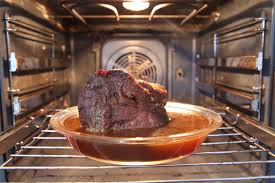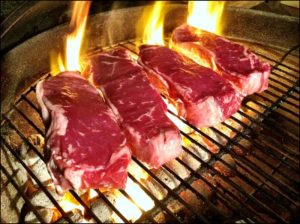
Among all the staple diets that we consume today, meat is the oldest one. Since the beginning of human history, we consume meat in one way or the other. The reason why meat never goes out of dietary choices is that of its enrichment of taste. In recent decades we have also come to know that it is packed with proteins i.e. one of the three basic daily macronutrients required.
However, with the growing body of scientific research regarding this editable provision, many new facts have come to the forefront regarding its consumption. For instance, excessive use of red meat has been linked to high cholesterol and cardiovascular problems. With that said, getting it completely out of your daily diet can lead to a protein deficiency.
Some of the attributes associated with health and nutritional implications is determined by the cut, type and the proportion of meat that you eat. In addition and just as important is the manner in which itsis cooked. Today, we feast on meat that is prepared through different cooking techniques.
In this article, we will discuss the variety of cooking techniques in light of their health and nutritional consequences after consumption.
Roasting
 Roasting is a cooking method where the meat is prepared through dry heating. It’s quite different to wet meat preparation, where water and other liquids are served as a medium of cooking. A pan which is usually used for the purpose of roasting has a holder to keep the dripping moisture away from the roasted item. It is important to do this to maintain the texture and taste of roasted meat.
Roasting is a cooking method where the meat is prepared through dry heating. It’s quite different to wet meat preparation, where water and other liquids are served as a medium of cooking. A pan which is usually used for the purpose of roasting has a holder to keep the dripping moisture away from the roasted item. It is important to do this to maintain the texture and taste of roasted meat.
Baking
Baking is very similar to roasting because it’s also a dry heating method which is carried out at the same temperature (usually around 300-400 F). However, it is usually used for the preparation of fish and poultry instead of red meat.
If we compare them with other cooking methods, roasting and baking are relatively healthy ways to prepare meat items. But roasting it for too long at high temperatures can result in loss of its nutrition. A comparative chart tells us that roasting and baking meat at high temperatures can result in the loss of nearly half of its micronutrients (in the form of vitamin B) from the moisture dripped out during its cooking. In addition, well done cooked meat can contain more potential carcinogens (substances that can cause cancer). So if you are one of those that enjoys eating well-done meat, you might want to reconsider.
If you want to preserve the nutritional value of baked or roasted meat, then make sure that you are not discarding all the meat juice that has oozed out during the preparation of the meal. You can later use this juice to garnish the prepared meal.
Grilling

Grilled meat is undoubtedly the most popular form of preparing meat-based foods. From steaks to burgers, grilling helps in preparing many delicious meat staples. It is a dry and direct-heat cooking technique where meat is heated without the use of any pan or chamber.
Nonetheless, the taste of grilled meat food items comes at a significant cost. There are a plethora of health complications that are associated with the consumption of grilled meat. Let’s have a look at some of the most reported and researched adverse effects associated with the consumption of this delicacy when grilled.
Formation of PAH
Meat contains fats and with its direct heating on a grill, a sizeable part of it melts and spreads over the metallic grill in the presence of high temperature. This activity gives way to chemical reactions, where Polycyclic Aromatic Hydrocarbons (PAH) are formed.
PAH compounds can soak into the grilled meat and therefore can transform it into a harmful food item which has been researched for several detrimental effects on human health. Development of different cancerous tumors is linked to significant traces of PAH in the body. However, it has also been studied that removing the moisture of food while grilling it can reduce the amount of PAH by 90 percent.
Formation of AGEs
Advanced Glycation End (AGE) Products are another organic byproduct formed during the grill cooking of meat. AGEs are linked to several harmful health implications. Increasing amounts of AGEs ending up in the body can raise its insulin resistance. Moreover, they are also known to aggravate cardiovascular problems.
A large number of precursor proteins, which react with sugar in the body to form AGEs, are activated during the grilling of meat. Therefore, the number of AGEs formed during grilling is the highest as compared to any other cooking method.
For people who don’t want to lose out on the taste of grilled meat, there are certain measures that should be taken during the grilling to limit the formation of harmful chemicals.
- Try to reduce the cooking time. You can slightly pre-cook the meat to cut down it’s grilling time.
- Be attentive during the preparation of grilled food items. Remove them from direct heat or change their direction as soon as they are transforming into a charred form.
In general, try to limit the consumption of grilled meat if you want to protect yourself from its potential detrimental effects.
Formation of PAH
Moisturized Cooking Methods
Stewing and poaching are usual meat cooking methods, which involve moisture. Since they are low-temperature cooking techniques, therefore the nutritional loss is less in their making. However, vital vitamin B can be lost if the food is stewed or poached for long time duration.
Formation of PAH
Frying
Frying is another popular form of meat preparation. In frying, meat is cooked at high temperature in oils. There are usually two types of frying which are used to prepare most of the meat foods:
Stir-frying: Meat is cooked in a moderate amount of oil through constant flipping and stirring. Since no meat juice is lost during stir-frying, it has better nutrition retention than other modes of cooking. However, heterocyclic amines are produced during stir-frying, which can lead to the development of cancer.
Deep-frying: Meat is immersed in oil while deep-frying. Deep-fried meat foods are undeniably tasty, but they are full of heterocyclic amines and AGEs.
From the above discussion, it is evident that roasting, baking, and stewing are the healthy ways to cook meat dishes. Try to add more meat, prepared through these cooking techniques in your staple diet in order to maintain a healthier dietary routine.
